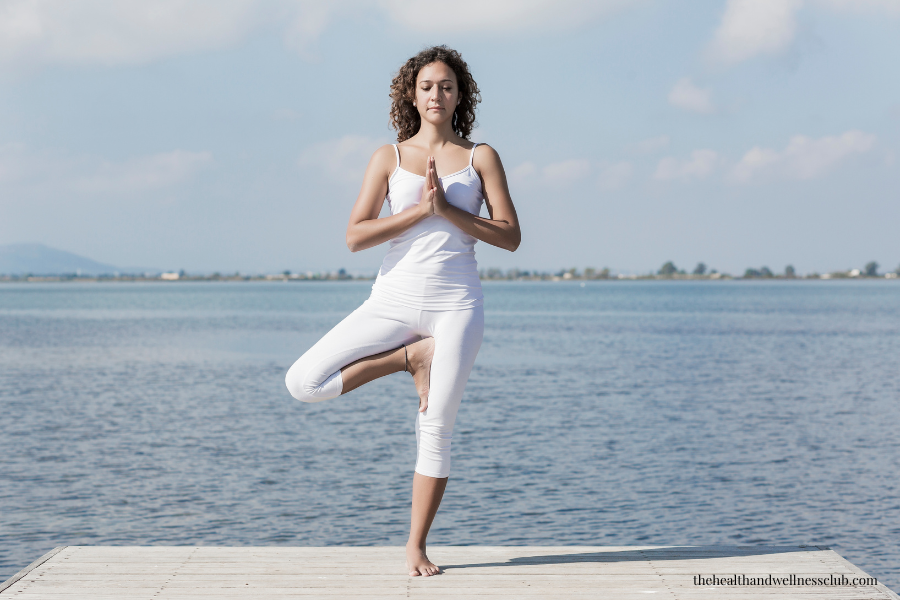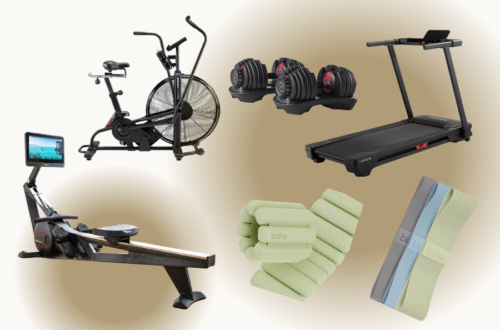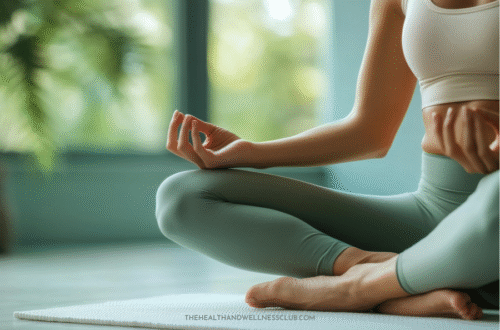Feel like your balance is just… off? Maybe you wobble during tree pose or feel mentally scattered even after your flow. I’ve been there too. And honestly, it wasn’t until I started focusing on balancing exercises that things began to shift—physically and mentally.
Balance isn’t just about standing on one leg. It’s about stability, focus, and inner calm. Whether you’re a seasoned yogi or just starting out, adding these four yoga balancing exercises to your routine can make a world of difference.
Let’s walk through them together—no judgment, just support and a little bit of fun.
Why Balancing Exercises Matter More Than You Think
Before we jump into the poses, let’s talk about why balance deserves your attention.
- Improves proprioception (your body’s ability to sense its position in space)
- Strengthens stabilizer muscles—especially in your ankles, knees, and core
- Enhances mental focus and reduces stress
- Supports joint health and injury prevention. This is especially important for people with osteoporosis to prevent falling.
Study has found that combining yoga and mindfulness-based movement significantly improved cognitive function and emotional regulation in older adults. That’s huge—because balance isn’t just physical, it’s deeply connected to how we think and feel.
1. Tree Pose (Vrksasana)

Why I Love It
Tree pose is a classic, but don’t underestimate it. It teaches you to root down while reaching up—literally and metaphorically.
How to Do It
- Stand tall with feet together.
- Shift your weight onto your left foot.
- Place your right foot on your inner left thigh or calf (avoid the knee).
- Bring your hands to prayer or reach them overhead.
- Focus your gaze on a fixed point (your “drishti”).
- Repeat on the other side.
Tips for Success
- Engage your core to stay steady.
- Root down through all four corners of your foot to find more grounding, which can help you to find balance easier.
- Press your foot and leg together for stability.
- If you’re wobbly, start with your foot on your ankle and work up.
Why It Works
Tree pose activates your hip stabilizers, core, and ankle joints, making it one of the most effective balancing exercises for beginners and pros alike.
2. Warrior III (Virabhadrasana III)
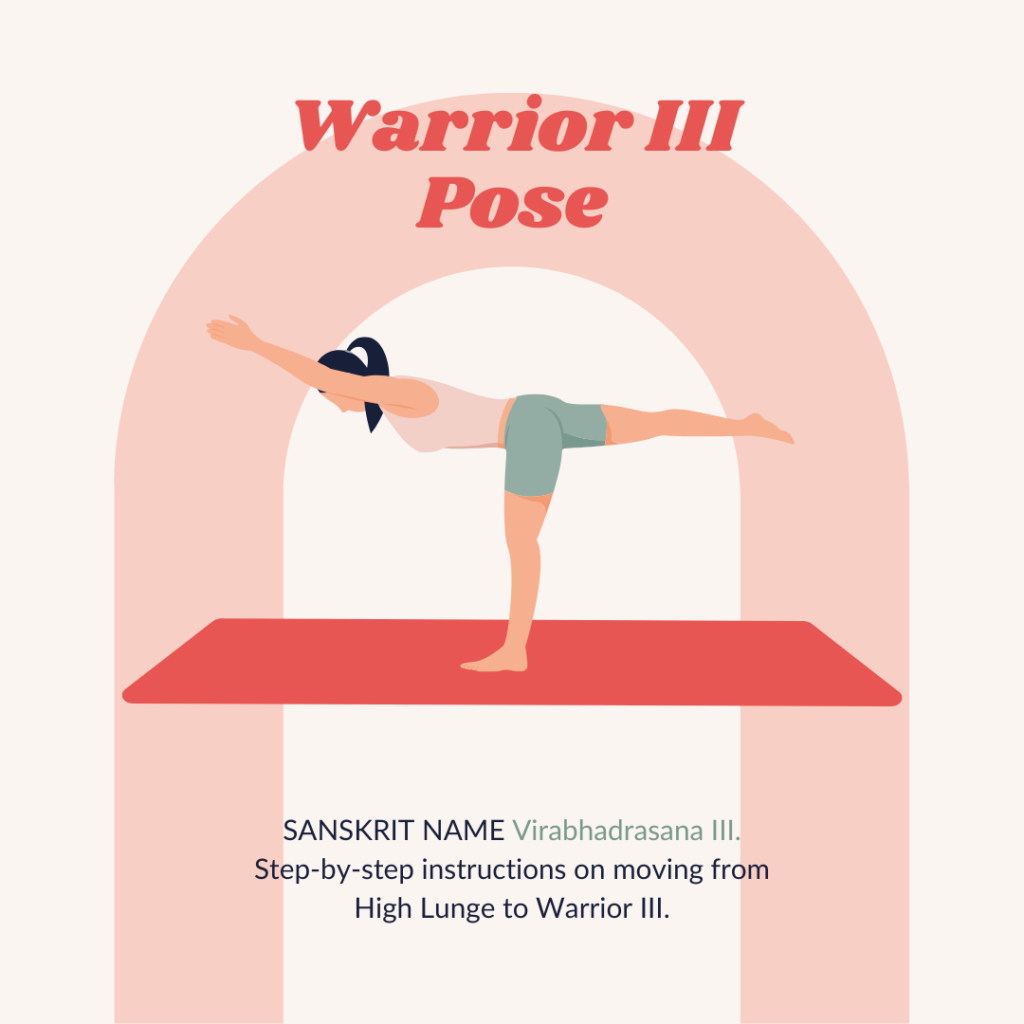
Why I Love It
This pose makes me feel like I’m flying. It’s strong, focused, and surprisingly humbling.
How to Do It
- Start in a high lunge with your right foot forward.
- Shift your weight onto your right foot.
- Lift your left leg behind you as you hinge forward.
- Extend your arms forward or keep them at your sides.
- Repeat on the other side.
Tips for Success
- Keep your hips square by engaging your inner thighs and glutes.
- Imagine your body forming a straight line from fingertips to heel.
- Use a wall or block for support if needed.
Why It Works
Warrior III strengthens your glutes, hamstrings, and core, while challenging your mental focus. It’s one of those balancing exercises that builds both power, strength and grace.
3. Half Moon Pose (Ardha Chandrasana)
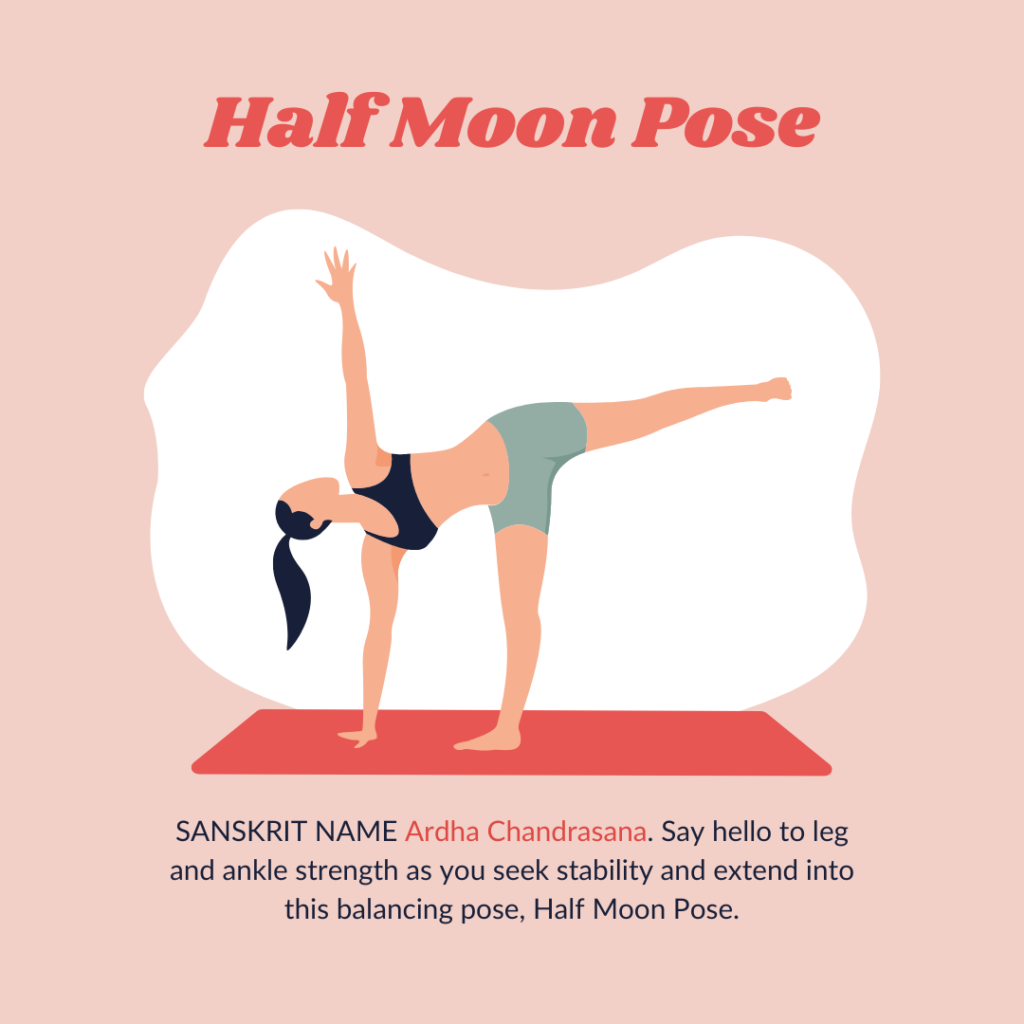
Why I Love It
Half Moon is playful and elegant. It opens up your body while testing your balance in a whole new way.
How to Do It
- Start in Warrior II with your right foot forward.
- Shift your weight onto your right foot and right hand.
- Lift your left leg and left arm up.
- Stack your hips on top of the standing foot and shoulders above your right hand.
- Repeat on the other side.
Tips for Success
- Use a block under your hand for support.
- Engage your inner thighs and glutes, draw you ribs and naval in for more stability and proper alignment.
- Flex your lifted foot to engage the leg.
- Keep your gaze forward or down if balance feels shaky. Usually gaze down is the easiest to balance.
Why It Works
This pose improves lateral stability, hip mobility, and spinal alignment. It’s a dynamic balancing exercise that also stretches and strengthens the body.
4. Eagle Pose (Garudasana)
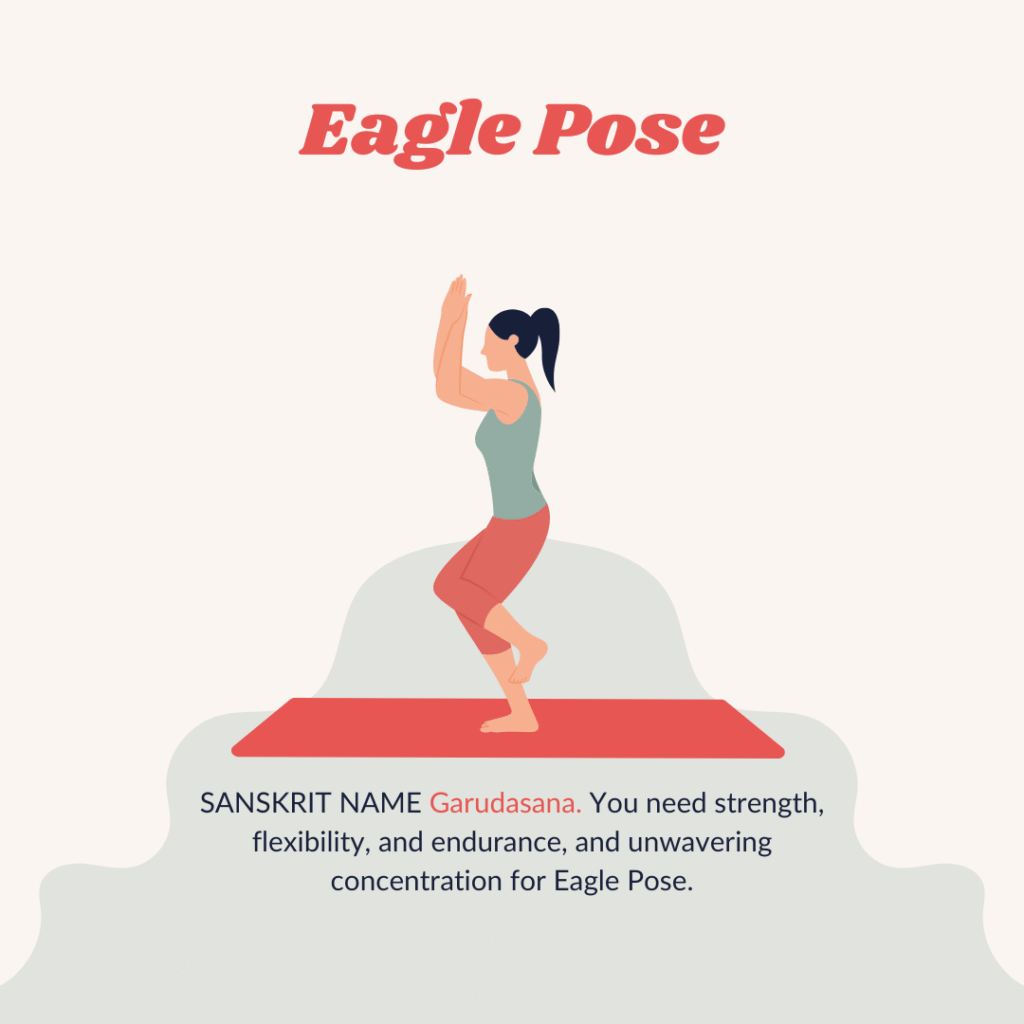
Why I Love It
Eagle pose feels like a hug. It’s grounding, intense, and deeply focusing.
How to Do It
- Stand tall and bend your knees slightly.
- Wrap your right leg over your left.
- Cross your right arm under your left and bring palms together.
- Sink low and hold.
- Focus your gaze on a fixed point (your “drishti”).
Tips for Success
- If the leg wrap is tricky, just cross at the thighs.
- Keep your elbows lifted and shoulders relaxed.
- Focus on squeezing everything into your center.
Why It Works
Eagle pose activates your inner thighs, glutes, and shoulders, while demanding serious concentration. It’s one of the most effective balancing exercises for building mental clarity.
How to Incorporate These Balancing Exercises into Your Routine
You don’t need to do all four every day. Here’s a simple way to start:
- Beginner Flow:
- Tree Pose – 30 sec (Right leg)
- Warrior III – 30 sec (Right leg)
- Repeat above on the other side
- Rest in Child’s Pose
- Intermediate Flow:
- Tree Pose – 30 sec (Right leg)
- Eagle Pose – 30 sec (Right leg)
- Warrior II – 10 sec (Right leg)
- Warrior III – 30 sec (Right leg)
- Half Moon – 30 sec (Right leg)
- Repeat above on the other side
- End with Seated Forward Fold
- Advanced Flow:
- Combine all four poses into a standing sequence
- Add transitions like Chair Pose and Standing Splits to feel the quads and glutes burn
- Cool down with pigeon pose or thread-the-needle pose
- Finish with meditation or breathwork
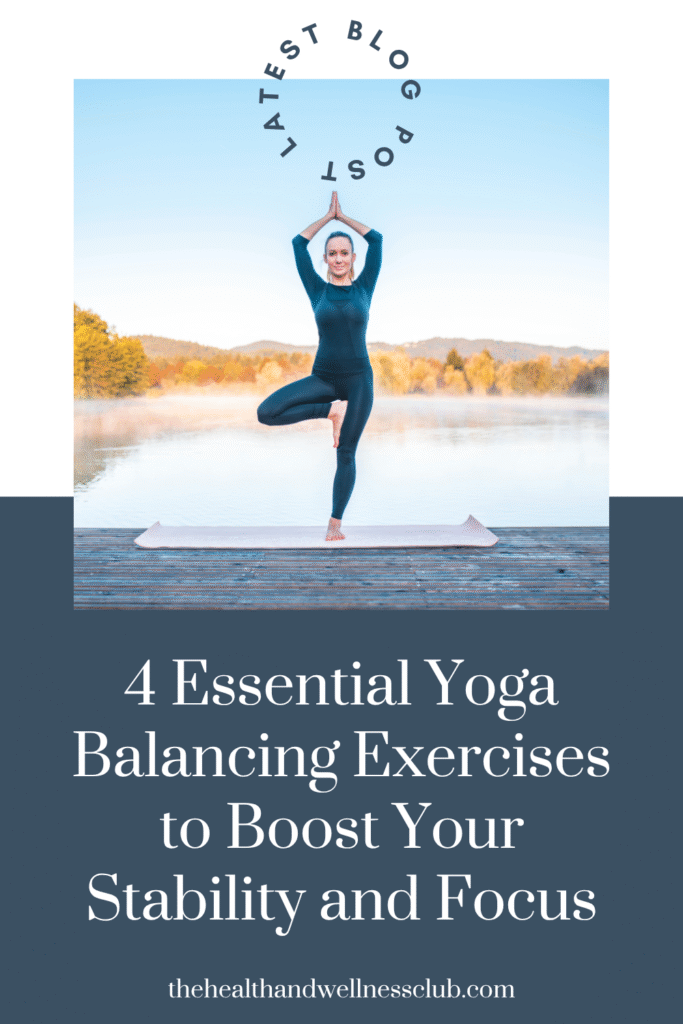
Scientific Backing for Yoga and Balance
Let’s get nerdy for a second (because science matters).
- A meta-analysis in JAMA Network showed that yoga and low-intensity exercise significantly reduced symptoms of depression and improved overall well-being.
- Another study highlighted how yoga breathing techniques like Sudarshan Kriya improved focus and reduced burnout in healthcare professionals.
These findings support what many of us feel intuitively—balancing exercises in yoga don’t just help us stand taller, they help us live better.
Final Thoughts: Balance Is a Practice, Not a Destination
If you’ve ever felt frustrated by your balance, you’re not alone. I used to fall out of poses all the time. But the more I practiced these balancing exercises, the more I noticed subtle shifts—in my body, my breath, and my mind. That’s the beauty of yoga, the mind-body connection. You have to learn to use and control your muscles. If you don’t use it, you will loss it.
Balance isn’t about perfection. It’s about presence.
So next time you step onto your mat, try one of these poses. Notice how your body responds. Celebrate the wobbles. And remember—you’re building something powerful, one breath at a time.
